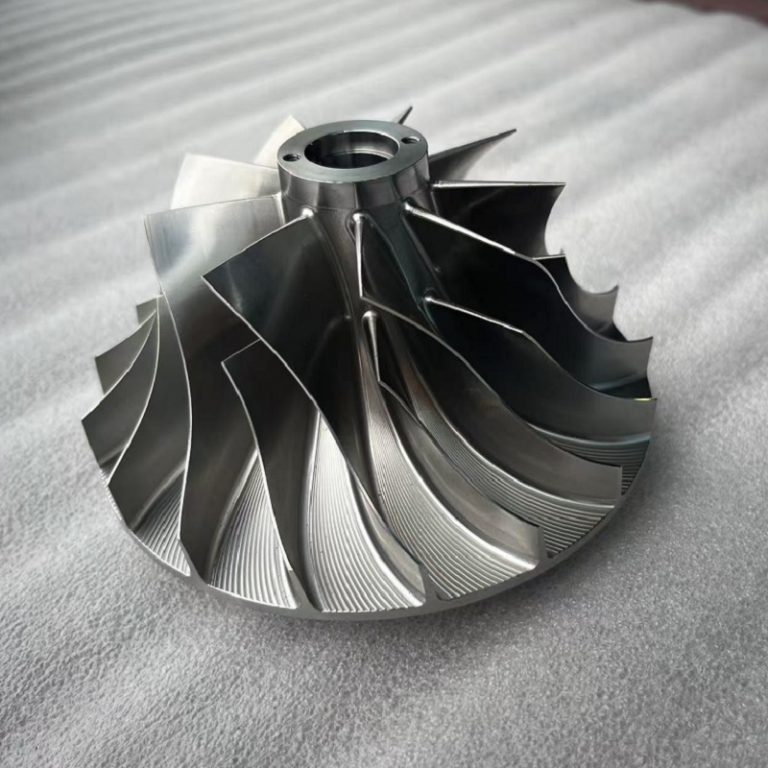
Centrifugal Impeller for Air Compressor
A centrifugal impeller is a crucial component of a centrifugal compressor, responsible for increasing the pressure and velocity of the incoming air or gas. It works by converting kinetic energy into pressure energy through rapid rotation. Here's an overview of its key aspects:
Structure and Design:
- Blades: The impeller consists of multiple curved blades mounted on a central hub. The blades are aerodynamically designed to efficiently transfer energy.
Hub and Shroud: The central part (hub) supports the blades, and a shroud covers the blades' tips, forming a sealed passage.
- Material: Typically made from metals like aluminum, stainless steel, or specialized alloys for strength and durability.
A centrifugal impeller for an air compressor is a crucial component in the compression process. The impeller works by converting the kinetic energy of the incoming air into potential energy, which increases the pressure of the air. Here’s how it typically works:
Air Intake: Ambient air is drawn into the compressor through the intake. This air is typically at low pressure.
Acceleration in the Impeller: The centrifugal impeller is a rapidly spinning disk with blades. As the air passes through the impeller, the blades accelerate it radially outward (away from the center).
Energy Conversion: As the air accelerates outward, it gains kinetic energy. The impeller increases the velocity of the air, which is then converted into pressure in the diffuser section.
Diffuser and Pressure Build-up: After the air leaves the impeller, it enters a diffuser. The diffuser slows down the air, which converts the high kinetic energy into pressure, effectively increasing the air pressure.
Exhaust: The high-pressure air is then directed to the compressor outlet, ready for use or further processing.
Impeller Design Considerations
Material: Impellers are typically made of high-strength materials like aluminum, stainless steel, or composite materials. This helps ensure they can withstand high rotational speeds and resist wear from the constant airflow.
Blade Geometry: The shape and number of blades are important for efficiency. The blades need to be designed to minimize losses and maximize energy transfer.
Clearances: Tight tolerances between the impeller and surrounding components (like the casing) are critical for preventing air leakage and maintaining efficiency.
Advantages of Centrifugal Compressors
High Flow Rates: Centrifugal compressors can handle large volumes of air, making them ideal for industrial applications.
Compact Design: These compressors are often more compact than other types of compressors, like reciprocating ones.
Smooth Operation: Because the impeller continuously compresses air, centrifugal compressors tend to have smooth and steady operation, reducing vibrations.
Would you like to know more about a specific type or application of centrifugal impellers for compressors?
Contact Information
- Tel
+86 17821620679
- Address
No.188 Road Chunhe,
Baoshan District, Shanghai China